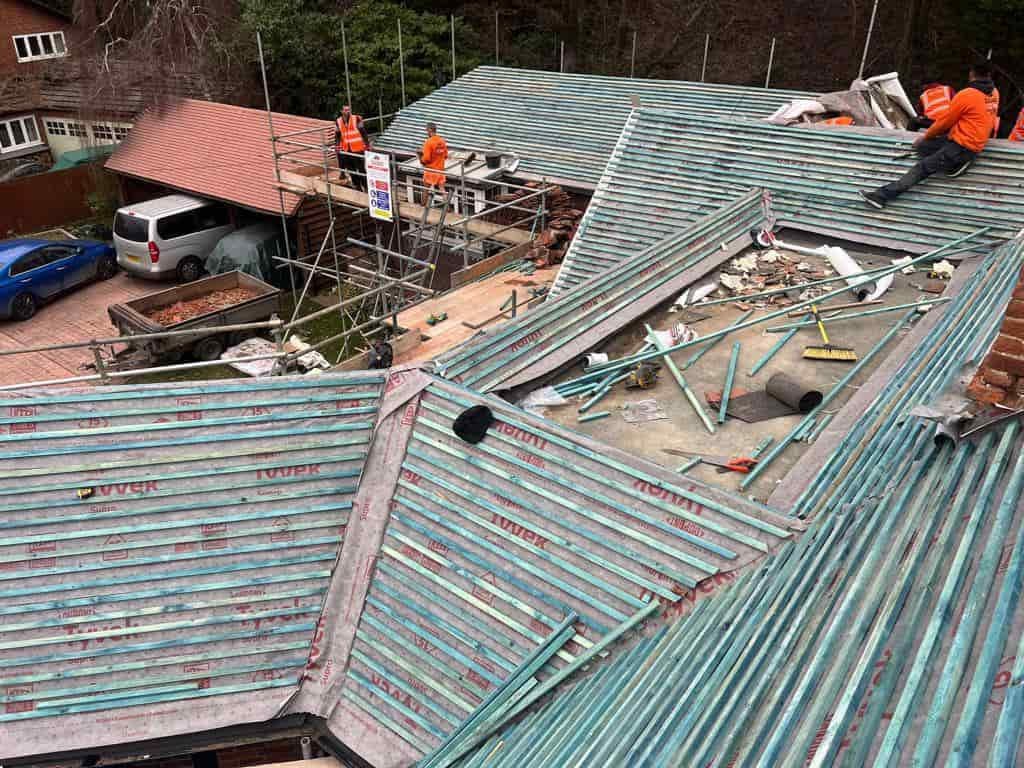Long-Term Maintenance Tips for Lead Flashing
Introduction: Lead flashing is a vital component of your roofing system, playing a crucial role in preventing water penetration and maintaining the integrity of your home. Properly installed lead flashing can last for decades, but like any building material, it requires regular maintenance to ensure it continues to do its job effectively. In this blog post, presented by LKP Roofing Thorne, we’ll provide you with long-term maintenance tips to help extend the life of your lead flashing and protect your home from water damage.
1. Regular Inspections
Routine inspections are the cornerstone of lead flashing maintenance. Conduct visual inspections at least once a year, ideally during the spring or fall, to assess the condition of your flashing. Look for signs of damage, such as cracks, splits, or gaps, as well as any loose or missing sections.
2. Clean Your Gutters
Clogged gutters can lead to water overflow and damage to your lead flashing. Ensure your gutters are regularly cleaned and free from debris, leaves, and dirt. This will help maintain proper water drainage and prevent water from accumulating near the flashing.
3. Address Rust and Corrosion
Over time, lead flashing can develop surface oxidation or corrosion due to exposure to the elements. If you notice any signs of rust, use a wire brush to remove it carefully. Afterwards, apply a specialised rust inhibitor or primer to protect the lead from further corrosion.
4. Seal Any Gaps
If you find gaps or separations in your lead flashing, addressing them promptly is essential to prevent water infiltration. Use a high-quality sealant or roofing cement to seal any openings or joints in the flashing. Ensure the sealant is applied evenly and smoothly to create a watertight barrier.
5. Replace Damaged Sections
In severe damage or deterioration, replacing damaged sections of lead flashing may be necessary. Replacing sections that have exceeded their lifespan or are beyond repair is a proactive approach to ensure your roofing system’s longevity and performance.
6. Check Flashing Attachment
Inspect the attachment of your lead flashing to the roof and walls. Ensure the flashing is securely fastened without any loose or detached sections. If you find any issues, reattach or replace fasteners as needed.
7. Maintain Proper Paint Coating
Some lead flashing may have a protective paint coating that helps prolong its lifespan and appearance. Check the condition of the coating and reapply the paint if it’s deteriorating. This will help prevent oxidation and maintain the flashing’s aesthetic appeal.
8. Professional Inspection
While DIY maintenance is essential, scheduling periodic professional inspections is also wise. Roofing experts can assess the overall condition of your lead flashing and identify any underlying issues that may require attention.
Conclusion: Proper maintenance of your lead flashing is essential for the long-term protection of your home. By following these maintenance tips and addressing issues promptly, you can extend the life of your lead flashing and ensure it continues to perform its critical role in safeguarding your home from water damage. If you ever encounter complex or extensive flashing issues, don’t hesitate to consult with professionals like LKP Roofing Thorne to ensure the integrity of your roofing system.
Call us on: 01405 808 195
Click here to find out more about LKP Roofing Thorne
Click here to complete our contact form and see how we can help with your roofing needs.

